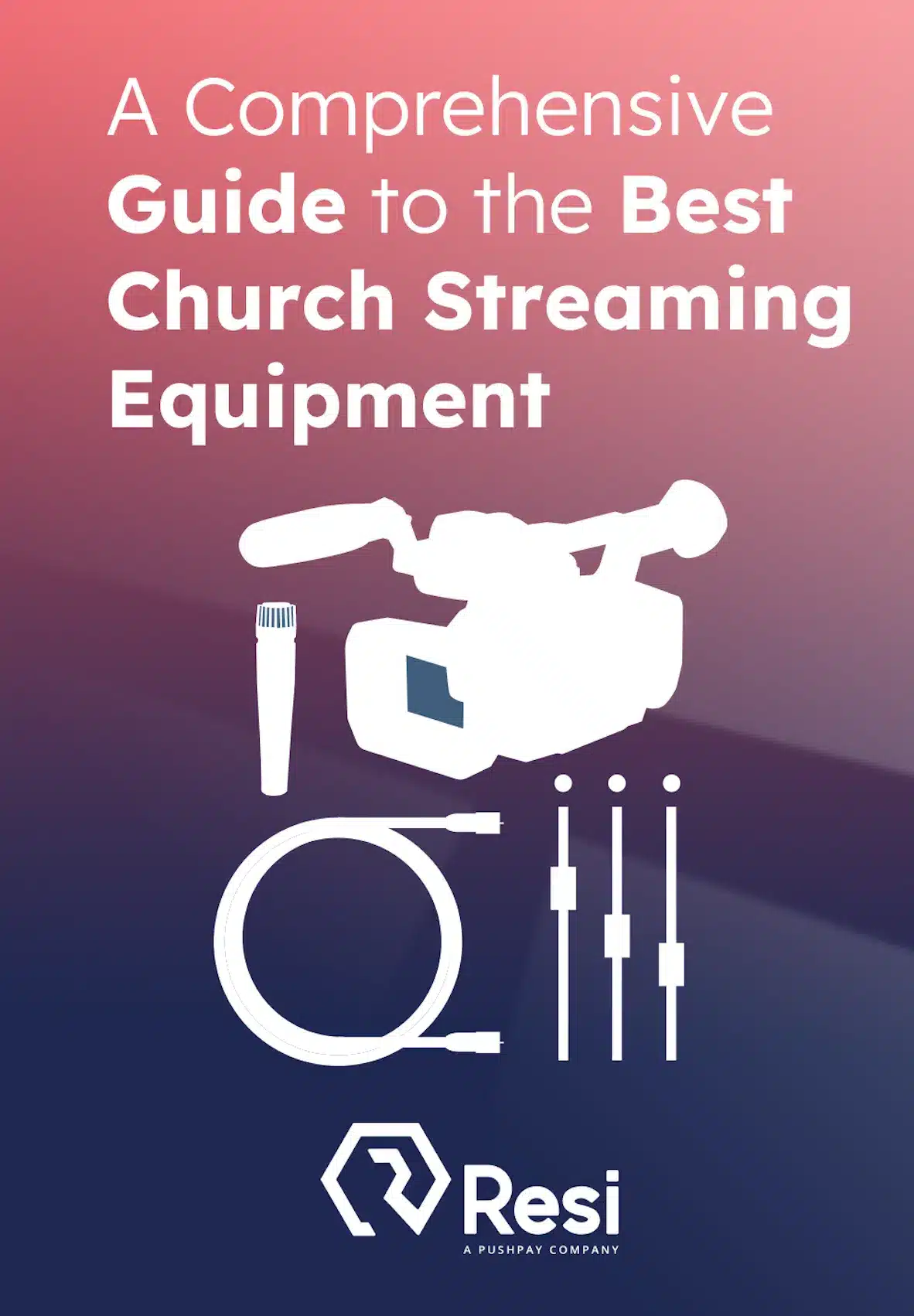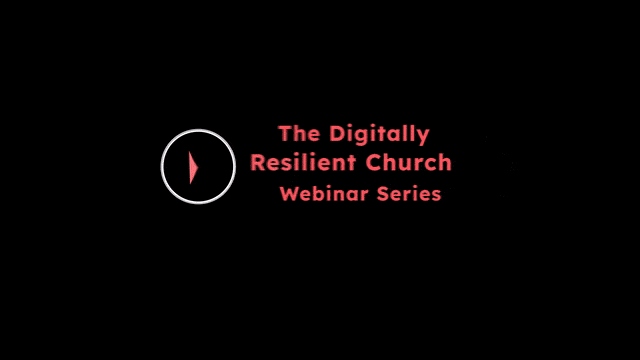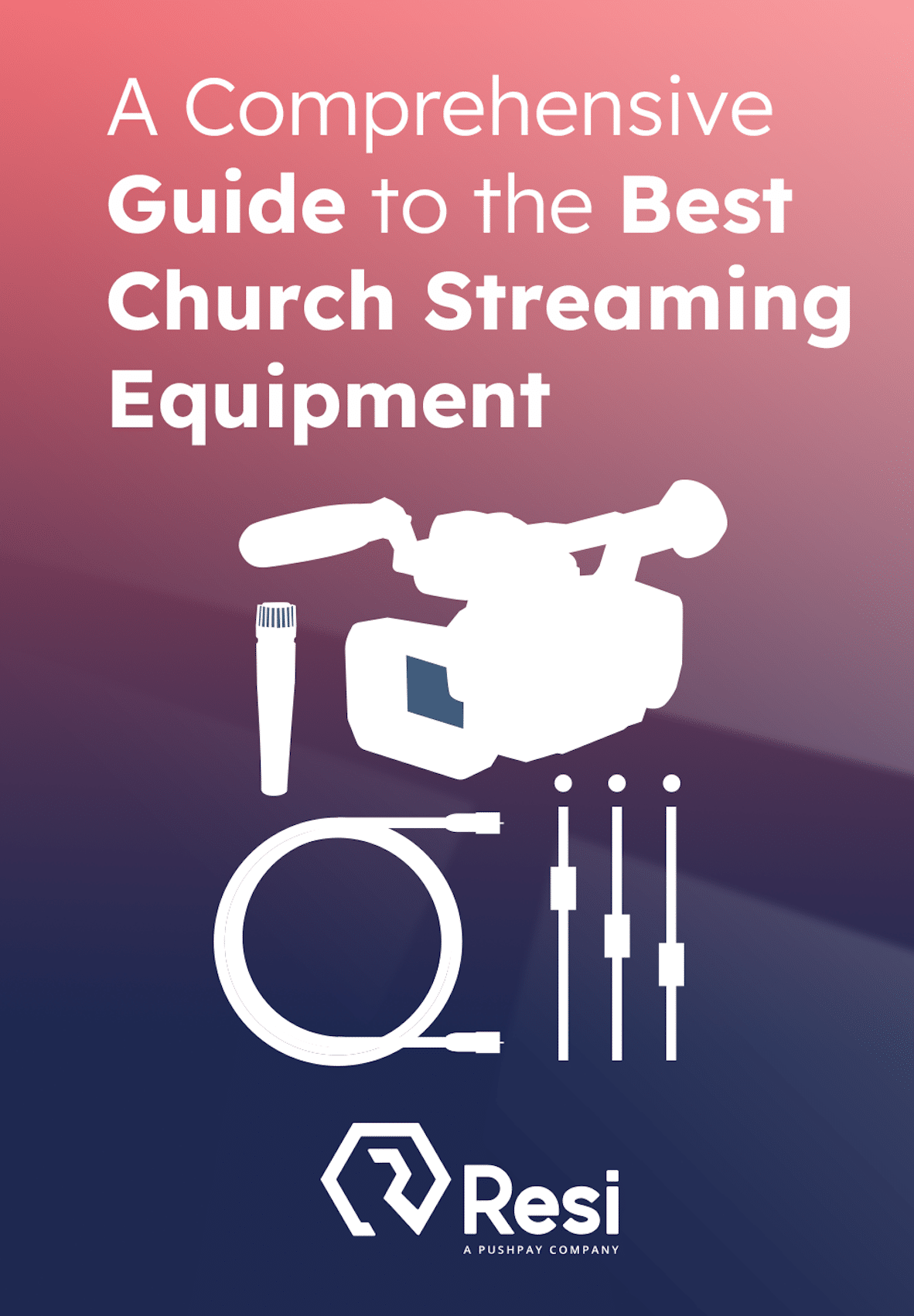
In church live streaming, technical problems can quickly interrupt a service and leave viewers feeling disconnected and even frustrated.
In this blog, we’ll cover the key steps churches can take to build reliable backup systems and failover strategies. With the right approach, churches can stay ready and keep their services running without major hiccups, even when the unexpected happens.
Why backup and failover strategies matter for church live streaming
Keeping the worship experience flowing
Technical issues can be distracting and discouraging for viewers, whether they’re attending in person or watching online. A sudden stream drop or audio glitch can break the flow of a service and leave people feeling frustrated. A solid backup plan helps prevent interruptions and provides a consistent experience for everyone tuning in.
Building trust with online viewers
Consistency is everything in live streaming. A reliable stream builds trust with the audience and encourages them to come back each week. When viewers know they can count on a smooth experience, they’re more likely to stay engaged, invite friends, and grow in their connection with the church.
Being ready for the unexpected
No system is perfect, and technical problems are bound to happen. Whether it’s an internet outage, equipment failure, or an unforeseen challenge, having a backup and failover plan in place makes all the difference. Being prepared means services can continue without major disruptions.
Key elements of a strong live streaming backup plan
Internet redundancy
A reliable internet connection is crucial, but it’s not always guaranteed. Having a backup option—such as a mobile hotspot—means the stream can continue if the primary connection goes down. This extra layer of security helps avoid unnecessary downtime.
Backup equipment
Depending on just one camera, microphone, or computer can be risky. Having spare gear on hand—like extra cameras, encoders, and cables—makes it easier to switch out faulty equipment and keep things running smoothly. Investing in backup equipment can save a service from unexpected failures.
Best Livestreaming Equipment
Discover what top-rated equipment we recommend adding to your church streaming toolkit.
Download for free!
Software and cloud options
Streaming software can crash or experience issues at any time. Keeping cloud-based backups and duplicate installations allows churches to quickly switch to an alternative setup when needed. Regularly saving settings and configurations makes it easier to recover and resume streaming without delays.
Power backup solutions
A power outage can instantly cut off a live stream. An uninterruptible power supply (UPS) can help keep key equipment running long enough to switch to an alternative power source or wait for the main supply to return. This means the stream continues even when the lights go out.
Failover strategies for smooth transitions
Automated failover systems
Automated failover systems are designed to detect technical issues in real time and switch to backup components without needing manual intervention. These systems monitor key elements like internet connectivity, hardware performance, and software stability. When something goes wrong, the system can quickly shift to a secondary internet source, backup encoder, or cloud-based solution—keeping the stream going without interruptions.
Manual failover plans
While automation is helpful, having a clear manual backup plan is just as important. A step-by-step guide gives the media team the ability to respond quickly when issues arise. This plan should outline how to switch to backup equipment, reroute internet connections, and keep key staff informed. Running regular drills helps everyone know their role.
Cloud-based backup options
Resi’s cloud-based platform provides multi-datacenter redundancy, adaptive bandwidth controls, and a resilience buffer—a brief, built-in delay that ensures uninterrupted, high-quality streaming even if local hardware or internet connections fail. By enabling a swift failover to a backup encoder or internet path, churches can maintain continuous live services without missing a beat, even if internet connections fail.
Best Livestreaming Equipment
Discover what top-rated equipment we recommend adding to your church streaming toolkit.
Download for free!
Setting up a reliable backup streaming system
Identify potential weak points
Start by taking a close look at the current streaming setup to find areas that could fail. This includes checking network reliability, hardware durability, and software stability. Knowing where things might go wrong allows for better preparation and targeted backup solutions.
Keep spare streaming equipment ready
Having backup cameras, encoders, microphones, and power supplies on hand helps ensure the stream continues if something breaks. Keeping spare equipment configured and ready to go allows for quick replacements with minimal downtime.
Use cloud storage for important content
Saving backup copies of pre-recorded services and other key content in the cloud creates a safety net in case a live stream goes down. Services like Google Drive, Dropbox, or dedicated church media platforms make it easy to access and stream alternative content when needed.
Run failover drills regularly
Testing backup plans on a regular basis helps identify any weaknesses and ensures the transition process works smoothly. Routine practice allows the media team to stay prepared and make any necessary adjustments to improve efficiency.
Train the media team
A well-trained media team is crucial to managing backup systems effectively. Providing hands-on practice and clear documentation helps team members respond confidently to technical challenges when they arise.
Best Livestreaming Equipment
Discover what top-rated equipment we recommend adding to your church streaming toolkit.
Download for free!
Common pitfalls to avoid when setting up backup systems
Skipping regular testing
One of the biggest mistakes churches make is not testing their backup systems often enough. Without routine checks, it’s hard to know if everything will work when it’s truly needed. Regular testing helps spot weak points, confirms that equipment is ready to go, and ensures the media team is prepared to handle unexpected issues.
Overlooking network security
Backup systems are just as vulnerable to cyber threats as primary systems, yet they’re often overlooked when it comes to security. Using encryption, strong passwords, and firewalls can prevent unauthorized access and keep streams secure. A well-protected backup system safeguards both the service and the trust of the congregation.
Failing to plan for growth
Churches evolve, and their streaming needs do too. A backup system that works well now might not be enough in the future. Choosing solutions that can scale with growing audiences, higher video quality needs, and additional platforms helps avoid costly overhauls down the road.
Poor communication among team members
Even the best backup system won’t be effective if the team isn’t on the same page. A clear plan ensures staff and volunteers know what to do if something goes wrong. Regular training and easy-to-follow documentation can prevent confusion and keep services running smoothly during unexpected disruptions.
How Resi supports resilient church live streaming
Resilient streaming with Resi’s protocol
Resi’s Resilient Streaming Protocol (RSP) is designed to handle unpredictable internet connections, keeping streams smooth and free from buffering. By adjusting to network conditions and storing data in advance, RSP ensures that viewers stay engaged without interruptions.
Cloud-based backup for peace of mind
With Resi’s cloud redundancy, churches have a safety net in place if something goes wrong. The system automatically switches to a cloud backup, allowing the service to continue without noticeable interruptions. This seamless transition keeps the audience connected and engaged.
Streaming across multiple platforms
Resi makes it easy to broadcast to multiple platforms at once, such as YouTube, Facebook, and church websites. If one platform experiences an issue, viewers can quickly switch to another without missing the service, ensuring consistent accessibility.
User-friendly failover management
Managing backups and failover systems doesn’t have to be complicated. Resi offers an easy-to-use interface that simplifies setup and monitoring, even for teams with limited technical experience. This makes it easier to respond quickly and keep services running without unnecessary stress.
Best Livestreaming Equipment
Discover what top-rated equipment we recommend adding to your church streaming toolkit.
Download for free!
Best practices for maintaining a live streaming backup plan
Schedule regular system audits
Regular evaluations of all streaming components are essential to maintaining a reliable backup plan. Conducting routine system audits helps identify potential vulnerabilities, such as outdated hardware, software glitches, or weak network connections. By scheduling periodic checks, churches can address issues before they escalate and ensure their backup systems remain effective.
Keep documentation is up to date
Having well-documented backup procedures is crucial for a smooth response during technical disruptions. Maintaining comprehensive and accessible guides allows both new and existing team members to quickly understand the steps needed to switch to backup systems. Regular updates to documentation ensure that any changes in equipment or processes are accurately reflected.
Stay informed about new technologies
The world of live streaming technology is constantly evolving, and staying up to date with new advancements can help churches improve their backup strategies. Whether it’s new software features, hardware improvements, or innovative failover solutions, keeping an eye on emerging trends allows churches to adapt and enhance their streaming capabilities.
Conclusion
Having a solid backup and failover strategy is essential to ensure uninterrupted church live streaming. Technical issues can arise unexpectedly, but with the right preparation, churches can provide a seamless experience for their congregation both in-person and online.
Taking proactive steps—such as conducting regular system audits, updating documentation, and staying informed about new technologies—helps to maintain a reliable streaming setup.
For churches looking to simplify and strengthen their live streaming infrastructure, exploring Resi’s solutions can provide peace of mind and reliable performance, ensuring that services run smoothly no matter what challenges arise.
Best Livestreaming Equipment
Discover what top-rated equipment we recommend adding to your church streaming toolkit.
Download for free!







